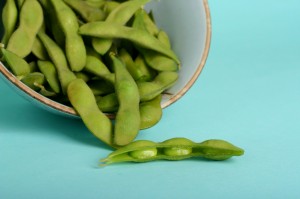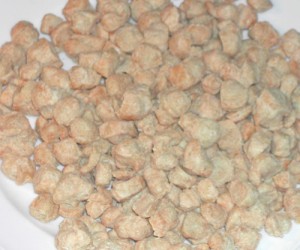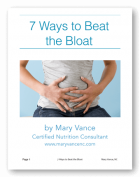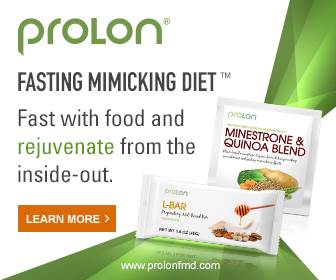I write a lot about soy foods, mostly because I believe they are one of the great nutrition mysteries and disservices of the decade. Remember when soy crept onto the scene as a magic bullet that can ease menopause, prevent cancer, and protect your heart? Soy has been consumed by Asian populations for centuries, and they have low incidences of breast cancer. In fact, the Japanese don’t even have a word for menopause. Soy is an ancient AND beneficial miracle food, right?
Let me be clear about something here. Yes, it is true that soy can be beneficial, but only when it is consumed as ACTUAL SOY (preferably fermented) and not a PROCESSED FOOD. Let me be clear again: when you pick up a soy protein bar or soy protein powder and read the label, what do you see? Hydrolized soy protein? Isolated soy protein? Textured soy protein? Soy crisps? Soy flakes? Soy grits? Does it come in a package or a tin or a bar? That is a processed food. That is not a whole food.
Processed foods have been broken down, refined, had chemicals added to them, molecularly altered, or altered from their original states in a lab, then added to a food to fortify it or boost the protein content. Your body cannot properly process and fully utilize these foods because they are at least in part unrecognizable from real foods.
Another thing: as a society, we feel that if a little of something is good, more must be better! And all of a sudden here is the American Heart Association telling us that soy isoflavones are beneficial, and we should have 25 grams a day. Isoflavones are naturally occurring plant hormones. Fine. They also exist in flaxseeds and other plant sources. But when Big Food Corps start creating soy plant-derived isoflavones in a lab so they are more potent, then adding them to packaged foods and slapping a “Heart healthy source of soy!” on the label, this is not the naturally occurring element, and it can have very detrimental effects. Sure, it may make you feel better for a while, but these artificially-generated hormones build up in your system over time because they cannot be processed and utilized, and then the pendulum swings the opposite way. You can begin to have low thyroid symptoms, mood swings, disruption of female hormones (heavier periods, no periods, worsening of menopause), develop soy allergies, and actually an increase in your risk for breast cancer.
This is very deceptive, and it’s a marketing ploy. Soy is very cheap and is a government subsidized crop. It’s easy to make lots of it, process it, and use all of its parts in food (soy lecithin, the waste sludge left over after soy is processed; soy milk after it is pressed and sugar and other vitamins/minerals added, for example). It’s also easy to genetically modify it so it grows better, faster, repels pests, whatever. Soy is one of the most highly genetically modified (GM) crops. There are no clear long term studies about the effects of GM foods. Do you want to be part of the nationwide study? You probably already are, unbeknownst to you, when you consume processed soy. I’m not trying to point fingers here, but let’s just say that I’m not sure major food corporations have your best interest in mind. I kind of have a hunch that they’re concerned with profit over public health. Just sayin.’
Anyway, sure, soy has been consumed for centuries and can be beneficial, in its original state, or better yet, fermented, like miso, natto, tempeh. When it is fermented (also an ancient practice), it is easy to digest and offers probiotics to help your digestion. Soy is very hard to digest in its whole (edamame) form. Some edamame is fine if you can tolerate it, but no need to overdue it. Eat whole or fermented soy only three times a week, not every day. In Asia, it is used as a condiment: a little bit of tofu in miso soup, for example. I don’t think Asian women are using soy protein isolate protein powders in their smoothies in the morning. If you notice bloating of GI upset, avoid soy. It is a common food allergen and very difficult to digest.
Read your labels, folks. I’ll broken record this again: stick to whole foods as much as possible. This removes the mystery from the magic food of the week debate. Too much of any food is bad, even eggs. Even fat. That’s why it’s best to rotate foods and don’t eat the same thing every day. Avoid processed soy bars, shakes, powders, whatever, at all cost. Stick to fermented. If you are vegetarian, stick to beans, lentils, quinoa, brown rice, eggs, fermented dairy. You’ll find you feel much better for your efforts.
Read more of my articles about soy
http://www.utne.com/science-and-technology/the-dark-side-of-soy.aspx

Mary Vance is a Certified Nutrition Consultant and author specializing in digestive health. She combines a science-based approach with natural therapies to rebalance the body. In addition to her 1:1 coaching, she offers courses to help you heal your gut and improve your health. Mary lives in San Francisco and Lake Tahoe in Northern California. Read more about her coaching practice here and her background here.








